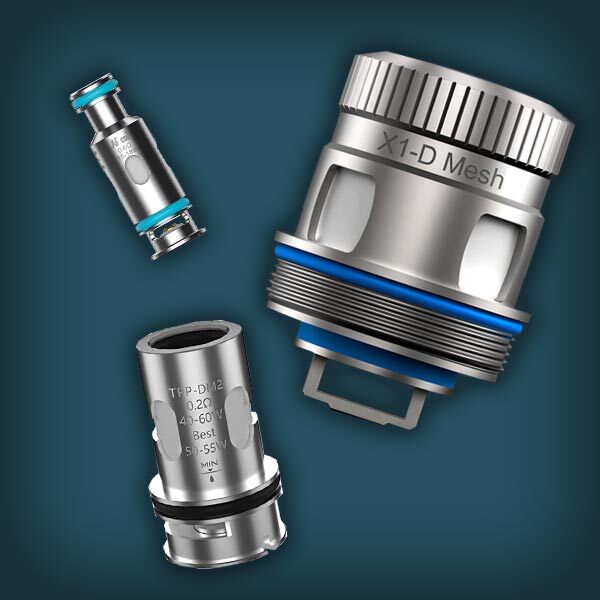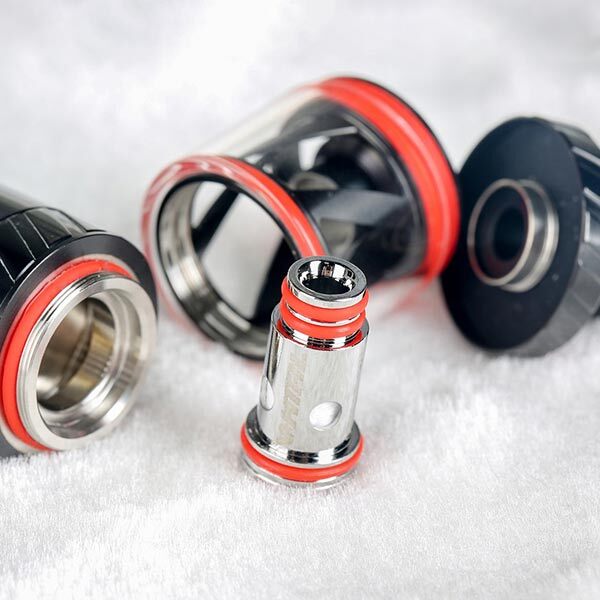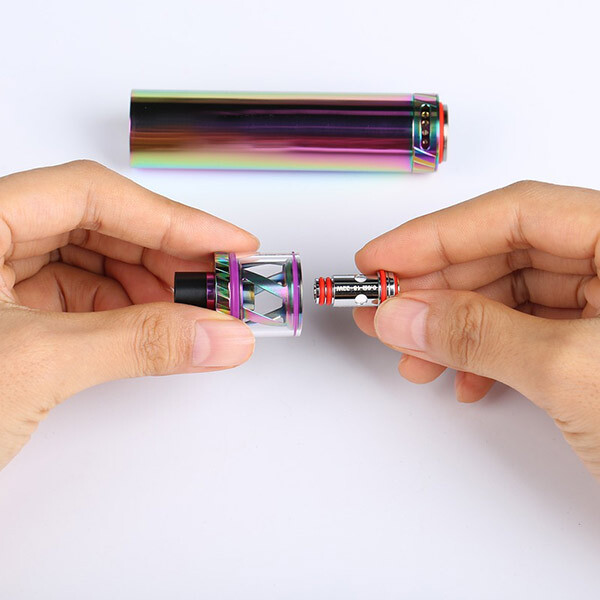Selecting Your Vape Coil Guide
26th Sep 2024

Vape coils are a key component of any vape kit. As conductors of electrical resistance, they aim to turn the most popular e-liquids into vapour. With different wire structures, wicking materials to absorb the vape juice and designs, every coil produces different results at varied speeds upon activation.
So, choosing the right vape coils to match your preferred vape kit and vape style – whether that’s mouth-to-lung (MTL), direct-to-lung (DTL, or restrictive direct lung (RDL) - makes a world of difference.
In this comprehensive guide, we will explain all you need to know about the right vape coil for you. After all, if you add the wrong coil to your vape device, it can produce bad flavour and overheat, creating a nasty burnt taste that can be difficult to move past, especially if you’re a beginner.
What is a Vape Coil?
Placed within a vape pod or tank, a vape device doesn’t function without a vape coil. Acting as the bridge between a vape battery and a vape e-liquid, the coil heats the e-liquid, turning it into vapour from the current produced by the battery.
Essentially a spiral of wire, which is wrapped around varied types of wicking material (in most cases cotton), a coil is often made of mesh but can also be made of other materials such as Kanthal, titanium or ceramic wire.
How Long Does a Vape Coil Last?
The lifespan of a coil can vary between a week and 3 weeks with frequent use. The answer differs depending on how much you vape and the quality of the vape
A DTL vaper will need to change their vape coils more often because of the richness and viscosity of high VG e-liquids they need to pair with the device. Vaped at a higher temperature, these will diminish faster and impact the coil's longevity.

In contrast, an MTL coil will last longer because the e-liquids are thinner and vaped at a cooler temperature. Experienced vapers will tell you it’s obvious when the coil is losing life - because it will begin to taste burnt and lose that rich e-liquid flavour available when you started.
How to Choose a Coil for Vaping
Every vaper will have a different preference and style that they wish to vape. If you want to stick to the similar method you did when smoking (puff, hold in the mouth for a second or two, down into the lungs and back out), this MTL style only works with a higher resistance coil.
But if you have seen vapers in the street or at work puffing larger clouds of vapour, you will want to choose a DTL coil. The lower the resistance the more cloud you can inhale in one puff. And the flavour will be maximised too!
With an MTL coil, the flavour will be much more discreet and the cloud production will be of a similar level to smoking as well.
What Coil is Best for Beginners?
With terms like restrictive direct lung, and electrical references to Ohms and Voltage, new vapers will want a vape coil that best matches their preferred vaping style and nicotine level.
Our advice for adults who want to quit smoking and are beginners with a vape should start with an MTL coil that produces a similar effect as smoking from a pod kit or vape pen.
When you decide to put down cigarettes and turn to vape kits as a nicotine alternative, most adults will admit that the initial terminology, because a vape kit is an electronic device, may be confusing or even daunting.
Therefore, making sure that you select a coil that matches the inhalation method (MTL, RDL or DTL) will depend on the vape coils’ resistance.
Choosing Your Coil Resistance
A vape coil resistance can vary wildly, starting as low as 0.10 Sub-Ohms up to 2.5 Ohms. Scientifically speaking, anything below 1.0 Ohms is considered a Sub-Ohm resistance. But as we mentioned earlier, a Sub-Ohm vape will produce more cloud, more flavour and interestingly a warmer vape.
Generally speaking, the coil resistance doesn’t make a huge difference to the sensation when vaping. Between 0.1-0.6 Ohms is considered a DTL vape. Vapers tend to do an RDL vape between 0.6 Ohms and 1.0. An MTL vape can be enjoyed between 0.6 and upwards, but the draw will be more restricted and tighter as you increase in resistance.
The feeling when inhaling the e-cigarette and how tight that draw may be the closest experience you will have to smoking. It’s one of the main reasons why millions in the UK opt for a vape as a smoking cessation tool instead of other nicotine replacement therapies such as nicotine gum or patches.

When to Replace Your Coil for a New One
Unfortunately, your vape coil will need changing before you know it. As most vapers require regular use of a vape kit to keep up the nicotine habit, and considering most coils last no longer than one month, it’s advised to always keep a couple spare just in case.
You will know even without experience of vaping when to change a coil because it will start changing how it operates, depending on the coil you pick.
For instance, if you select a low-resistance coil for Sub-Ohm vaping, the flavour will start to diminish, or the vapour production will reduce.
The chances are that if you vape with a higher ratio of Vegetable Glycerine (VG) e-liquid with a low resistance coil, these types of vape juice with a higher powered device produces much more cloud which is fantastic but also clogs the coil quicker, meaning you will need to change the coil at a greater frequency and it wouldn’t last as long as an MTL coil with a high PG e-liquid.
High Resistance Coil Advantages (MTL)
- Requires less battery so no need to charge as often
- Stronger throat hit
- Reduced amount of e-liquid required
Sub-Ohm Resistance Coil Advantages (DTL)
- Improved flavour and cloud size
- Heats your e-liquid at a faster speed
- Better suited for direct-to-lung vaping
Sub-Ohm Restrictive Direct to Lung Coil Advantages (RDL)
- The throat hit of MTL but the lovely flavour you get from DTL vaping
- Not as intense airflow from the coil as you would get from a Sub-Ohm DTL vape
- Smoother transition than just going from MTL to DTL vaping
Final Thoughts
Due to the various shapes and sizes of vape devices created, choosing a coil that is compatible with your device is key. If you select a coil that doesn’t fit together with your vape mod tank or vape pod, you will find it difficult to vape correctly and achieve maximum performance.
If you didn’t know already, some vape coils are available as single-coil, dual-coil and even quad coils. What’s best for you depends on personal preference. A single vape coil will use less battery than a quad coil because there is less wire to heat up. It’s easier to use, more discreet and an experience closer to smoking if you’ve just switched. With multiple coils and a thicker wick, this will enhance the flavour produced and create larger clouds.
We leave that decision up to you but like always, with any questions head over to our contact page and reach out to one of the V2 Cigs team for any assistance or coil recommendations.
Vape Coil FAQs
How to Prime a Vape Coil
Priming vape coils is the process of saturating your coil in e-liquid before heating up to avoid a ‘dry hit’, which can lead to a burning sensation in the throat. To do so, all you have to do is add one or two drops of vape juice where you can see the wicking material. Allow this to soak for ten minutes before adding your coil to the tank or pod.
How to Clean Your Vape Coil
To clean your coil, get a clear spirit such as vodka or vinegar and soak your coils in a bowl of either liquid for a couple of hours. Once that’s done, rinse with cold water, dry with a paper towel thoroughly and add back to your tank or pod. For a full guide on how to clean
Why Does the Vape Taste Burnt Even With a New Coil?
There are several avoidable reasons why your brand shiny straight out of the pack coil may be giving your vape a burnt taste. First, it could be as simple as changing the wattage to reflect what the brand recommends (usually printed on the coil).
Or there could be a small amount of e-liquid that’s leaked where it’s not supposed to on the coil. This dark thick liquid can burn and cause a bubbling effect, so check the coil from time to time to ensure this isn’t the reason.
But the most common has to be not priming the coil correctly (or at all). Fail to do this, or not wait long enough after priming, and you could burn that new coil and need to grab another!
